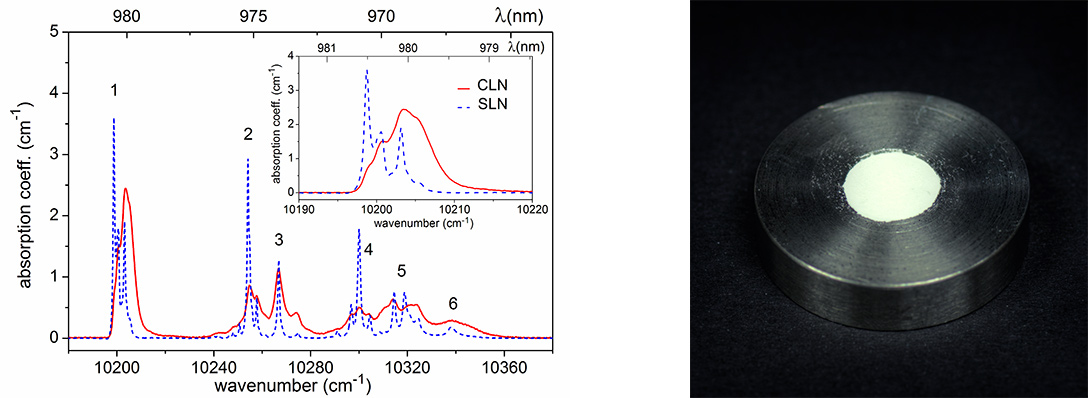Main content
Top content

Luminescence in Er- and Yb-doped Lithium Niobate: from bulk to nanocrystals
Lithium niobate is an important solid for the field of quantum control with electromagnetic waves, because it acts as ion trap for rare-earth atoms like Er3+ or Yb3+. High ion concentrations, the suppression of ion fluctuations and the possibility to widely tune the properties of the ion trap by stoichiometry and/or doping make lithium niobate promising for the realization of devices. Although, however, the doping of lithium niobate crystals with rare-earth elements has been studied intensively over the past decades, almost nothing is known about the interplay between the luminescent ions and the properties of the host crystals. In particular, the impact of small polarons, of phonons and of random magnetic fields induced by the host crystal is unknown. The present project addresses these questions by the study of rare-earth doped bulk single crystals and nanocrystals by means of a combination of time-resolved absorption & luminescence, spectral-hole burning and photon-echo measurements. Using lithium niobate nanocrystals is advantageous because ballistic and hopping transport of small polarons, phonons and random magnetic fields are strongly affected by the host dimensions limited the nanoscale, the size of the nanocrystals thus is a crucial experimental parameter. The projects’ workprogram involves the growth of bulk and nanocrystals, their structural and optical characterization, pump-probe studies of ion and host properties and the analysis and modeling of the obtained data. This variety of methods is the driving force for the exchange of a total of 10 young researchers, thereof four women. It further allows for a feedback strategy, i.e. an optimization of the doped crystal host using the modeling results.
From the viewpoint of applications, particularly, the optimization of experiments for quantum control up to the control of quantum states is facilitated.

